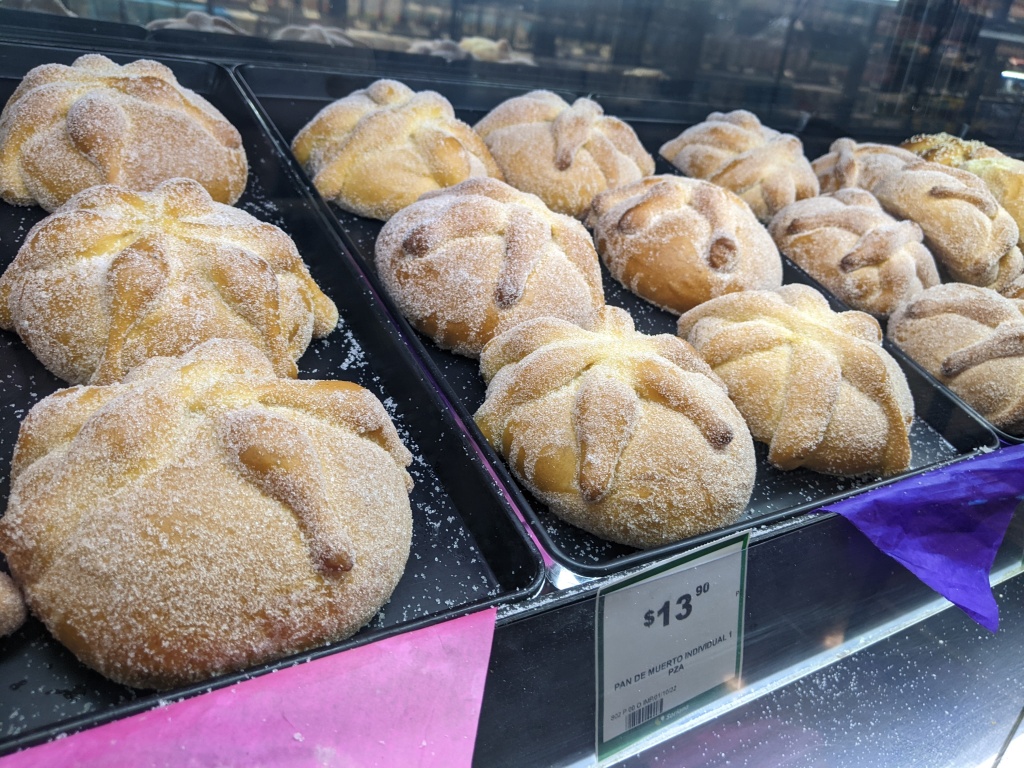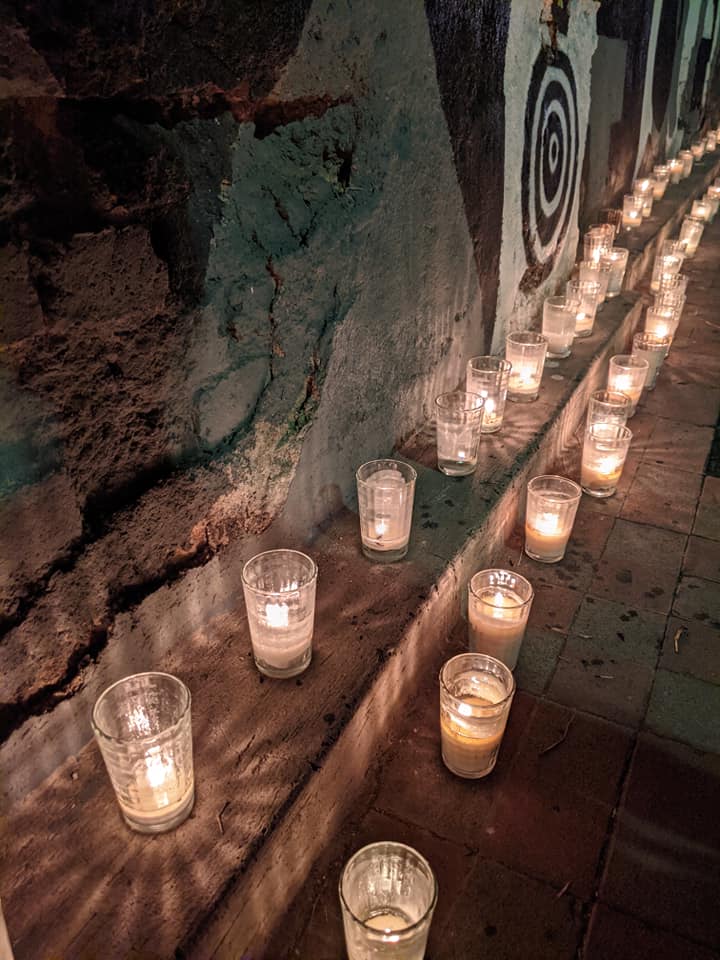
Another spooky season is upon us, which, of course, has me reflecting on last year’s festivities, and since last year was our first full year in Mexico, I remember having a lot of questions regarding two very colorful (yet slightly morbid) holidays that happen to take place in the same fun-filled week. Thankfully, we had a brilliant education last year, and now I’m ready to share all that I learned! So, if you’ve ever found yourself wondering how Halloween and Día de Muertos are celebrated south of the border, well, you’re in for a treat (see what I did there?) because this post is about to get frightening(ly in-depth). Mwahaha!
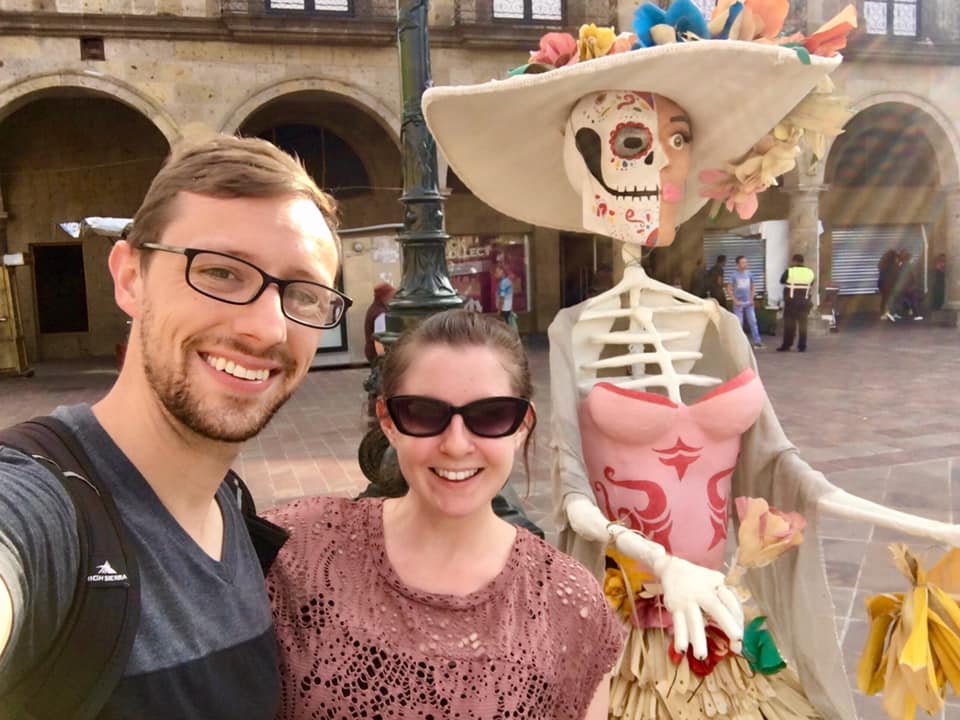
Halloween in Mexico

So, first off, whenever we would ask locals about Halloween in Mexico, they’d typically tell us that it’s not really celebrated…but I beg to disagree. Grocery stores start selling costumes and decorations in September, many restaurants have jack-o-lanterns and spiders welcoming their guests, and last year on Halloween (and several days on either side of it) I witnessed creepy clowns, Squid Game contestants, and many other characters walking down the street. There are also Halloween-themed events advertised for both kids and adults all month long, so whether it’s gimmicky or not, I sense a bit of a celebration. Of course, we’ve also been told that the closer you get to the US border, the more Halloween-y it will feel. Places like Monterrey, Ciudad Juarez, and Tijuana have the most going on, but even down here in GDL, the global holiday influence is still felt. However, I also can’t deny that there is a lot more buzz around the infamous Day of the Dead, and rightly so.
Día de Muertos

With such a sinister sounding name, it’s easy to connect the ghosts and ghouls of Halloween to this particular holiday, but in reality, Día de Muertos seems to have more in common with the All Saints’ Day we experienced in Poland or with China’s Tomb Sweeping Day. The holiday’s purpose is to honor family members who have since passed, much like other memorial holidays around the world. In fact, Día de Muertos is partially connected to Catholicism, thus the same date as All Saints’ Day; however, there’s also an indigenous twist in Mexico’s version of remembrance. Origins and comparisons aside, the first thing that really confused me was actually the name itself. I was constantly hearing and seeing both Día de Muertos and Día de los Muertos…so which should I be using?! Apparently, no importa, both are used, both are correct. It’s a pick your own poison sort of thing.
The next thing we learned was that Día de Muertos is actually días, plural. The holiday consists of two very important days/celebrations, one on November first and one on November second (of course, like other holidays, the celebrating really stretches throughout the whole week), but the significance of these two days is really interesting. November first is the day when the spirits and souls of innocents (or children) are remembered and honored. This day was a bit quieter and included a lot more white flowers (as opposed to the usual gold) and decorations especially for kids. For example, one of the tombs we saw had an array of toy cars and candy set out. The next day, November second, is the big day, the day when all the other ancestors are to be remembered and celebrated, with even more flowers and special treats, of course.
So how does one celebrate Día de Muertos?

Well, like every other major holiday, there are lots of regional differences and personal preferences at play, but a few of the more traditional elements include cleaning and decorating the tombs/graves of your ancestors, making an ofrenda (or alter) in your home for more recently lost family members, and having a party to celebrate the circle of life in general. Last year, Tucker and I visited two cemeteries to see some of the tomb cleaning and decorating for ourselves, and we were absolutely amazed! Even in a large, modern city (which usually has fewer traditionalists) and even with some of the oldest cemeteries (whose descendants might also be gone at this point), not to mention a pandemic to contend with, people really went all out! Famous Jaliscienses (people from Jalisco) had the most going on with elaborate flower carpets, rows and rows of candles, and a huge amount of papel picado (the colorful paper flags), but due to the ongoing Covid battle, former nurses and doctors were also highly celebrated, as were all the other lucky souls who still have devoted family members living in the city.

The tombs are often set up much the same as the alters at home. Flowers are a must, specifically cempasúchiles (marigolds) because their bright color and strong scent help guide spirits back for the night. This is the indigenous twist I was mentioning earlier: the ancient belief was that only on this night and only if your family put up an alter for you could your spirit come back to Earth and enjoy the party. This is also why the alters are often adorned with the favorite foods, drinks, and other preferences of those who have passed – something for them to enjoy on their journey. Sometimes it’s real food and drink left out (which is usually eaten by the living family members at some point), but sometimes the alters are decorated with figurines of all the ancestors’ favorites, which you can find at pop-up markets all month long: tiny plates of tacos el pastor, little bottles of tequila, itty-bitty cigarettes, etc. If someone loved it, you can find it in miniature. Sugar skulls with the names of those who have passed are also common for the ofrendas, but today, kids often want their own names put on them, further emphasizing that this celebration is for both those who are gone and those who remain.
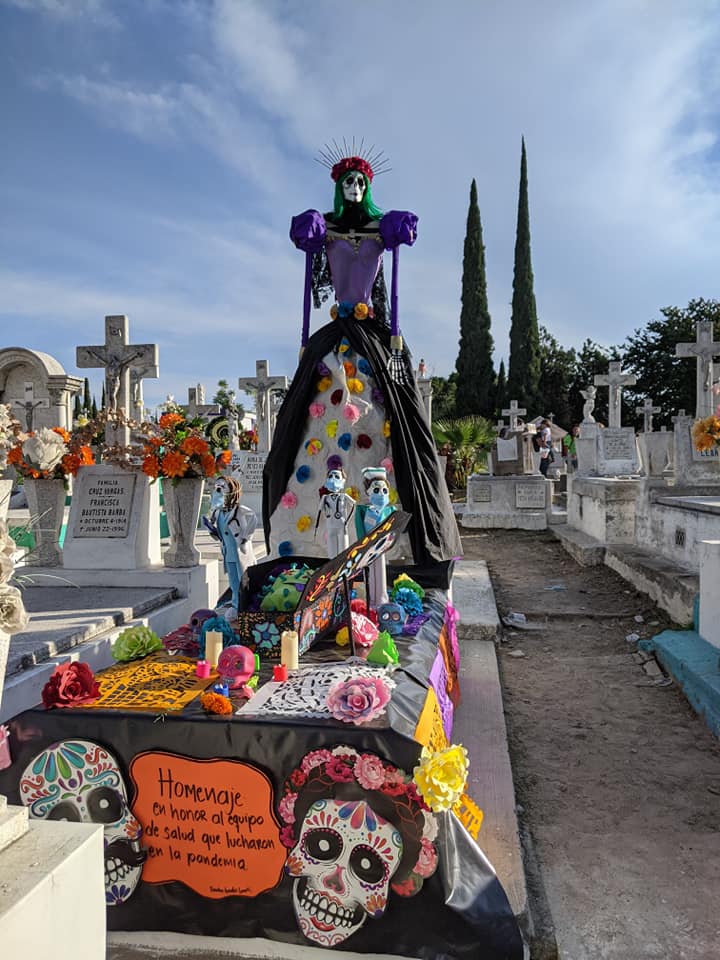
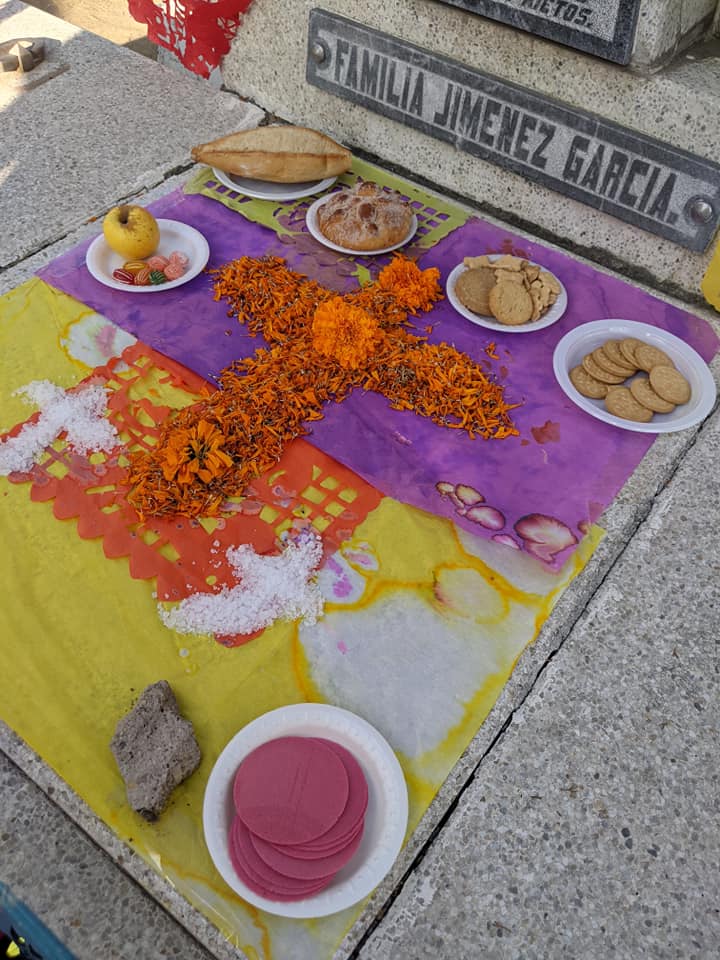

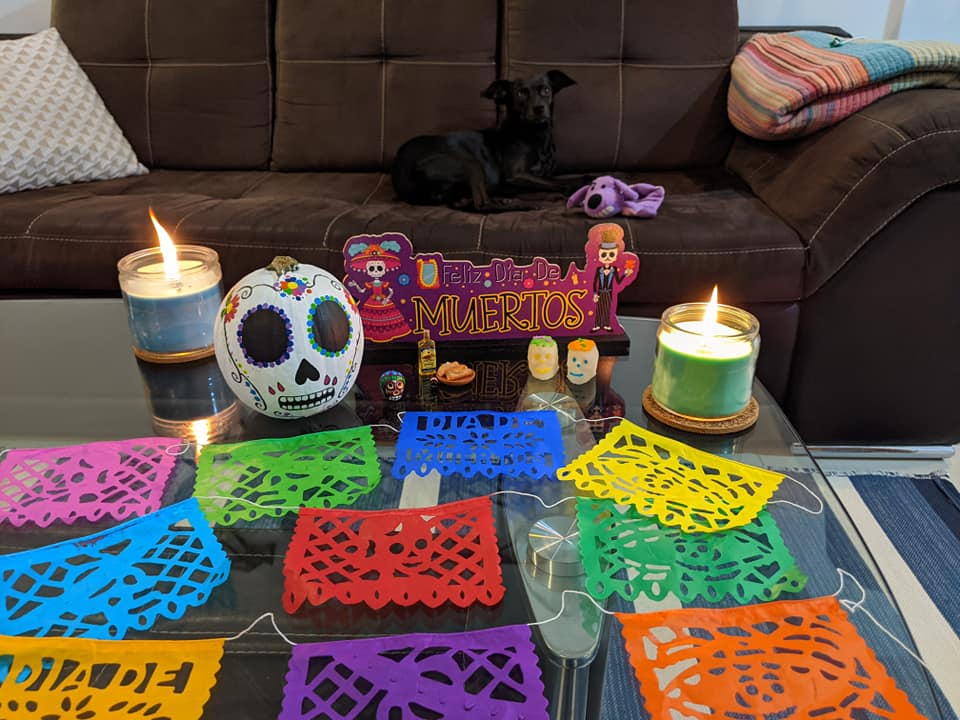
While the decorations and alters might be the most eye-catching parts of Día de Muertos celebrations, the most memorable part, for me, was the party atmosphere. There is nothing creepy or sad about this particular holiday. It is all joy; music is everywhere, families hugging, kids playing, even in the cemeteries themselves. And once the alters and ancestors are taken care of, more partying takes place in the form of parades, mariachi performances, and snacks for all (including the infamous pan de muerto, a sweet bread in the shape of crossbones). Sometimes in pictures, Día de Muertos can look like an homage to death with all the skeletons and tombs, but in reality, it is a celebration of life and family, and it’s something I’m very much looking forward to celebrating in person once again.
